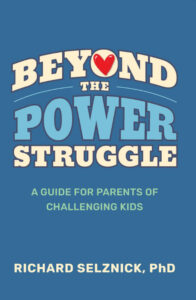“The Continuum of Normality”
In my files, I came upon an article I’ve kept for a few years, called, “The Real Reason Everyone Seems to Have ADHD These Days,” by Ralph Lewis, M.D..
Here are a few choice quotes from the article:
- … Part of the confusion stems from how ADHD is described and categorized as a “disorder.” Most textbooks or official websites state that ADHD is a neurodevelopmental disorder, portraying it as an abnormal brain condition with specific causes. The phrasing of such explanations creates the impression that ADHD is a “thing” that you either “have” or don’t have. This inevitably leads to endless debate about whether it’s a “real thing” and whether a particular individual really “has” the condition or not.
- “Despite the language of the textbooks and official websites implying that ADHD is a clearly defined, well-demarcated disorder, most experts if pressed, would no doubt agree that ADHD is almost always on a continuum with normality.”
- “The fact that there is no fixed cut-off or threshold for the diagnosis means that ADHD is not a categorical yes/no diagnosis.”
Those of you who have read my blog posts for some time, know that I am in full synch with these points.
Along with what Dr. Lewis said about ADHD, you can substitute the word “dyslexia,” and the same essential point applies, as reading, spelling and writing issues occur on a continuum.
I like the phrase that he used, the “continuum of normality.” It helps to move you away from something I refer to as “disorder thinking,” to viewing issues on a normal continuum.
Put this on your phone notes: “It’s all a continuum, baby.” (Dr. Richard Selznick).
Do you think that will make it into Bartlett’s Familiar Quotations? Maybe you can nominate it for me!

 A number of years ago, I had the good fortune to take part on a panel during a symposium on dyslexia sponsored by the grassroots parenting group, Decoding Dyslexia: NJ. Dr. Sally Shaywitz, the author of “Overcoming Dyslexia” was the keynote speaker. While talking about assessing dyslexia, Dr. Shaywitz said something that really struck me, as it reminded of something I had been saying for years.
A number of years ago, I had the good fortune to take part on a panel during a symposium on dyslexia sponsored by the grassroots parenting group, Decoding Dyslexia: NJ. Dr. Sally Shaywitz, the author of “Overcoming Dyslexia” was the keynote speaker. While talking about assessing dyslexia, Dr. Shaywitz said something that really struck me, as it reminded of something I had been saying for years.
 Copyright, Richard Selznick, Ph.D. 2023, www.shutdownlearner.com.
Copyright, Richard Selznick, Ph.D. 2023, www.shutdownlearner.com.